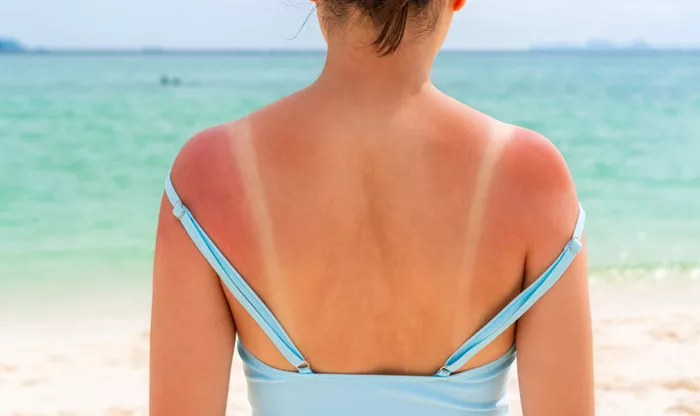The sun gives off invisible ultraviolet (UV) rays, called UVA and UVB, which can harm your skin. Too much sun can cause sunburn, skin rashes, changes in skin texture, and even skin cancer. UV rays can reach you even on cloudy days, so skin damage can happen anytime you are outside.
What Is Sunburn?
Sunburn happens when your skin gets more UV rays than your natural pigment, melanin, can protect against. It usually causes skin to feel hot and painful. On lighter skin, sunburn looks red, but it might not be easy to see on darker skin. Severe sunburn can cause swelling, blisters, fever, chills, and weakness. In rare cases, it can lead to shock.
After a sunburn, your skin may peel and itch for several days. The burned skin is more sensitive to the sun and at higher risk for early aging and skin cancer later in life.
People with fair skin, light hair (especially red), or those taking certain medications like antibiotics or anti-inflammatory drugs are more likely to get sunburned.
How to Treat Sunburn
- Use cold compresses on the burned skin.
- Take pain relievers like aspirin or acetaminophen.
- Apply aloe vera gel or cooling ointments.
- Stay out of the sun until your skin heals.
Seek medical help if the sunburn is severe or if you have symptoms like fever or confusion.
Photosensitivity: When Skin Reacts Strongly to Sunlight
Some people have a condition called photosensitivity, where their skin reacts too strongly to sunlight. This can cause rashes that look like sunburn or eczema and may include blisters, itching, or burning. Photosensitivity can be triggered by certain medications, chemicals, plants, or health conditions like lupus.
There are two types of photosensitivity reactions:
- Phototoxic reactions happen quickly after sun exposure and cause skin damage.
- Photoallergic reactions happen a day or more later and involve the immune system attacking the skin.
Polymorphous Light Eruption (PMLE)
PMLE is a common sun sensitivity that causes rashes a few hours or days after sun exposure. It usually affects women aged 20 to 40 but can happen to anyone. The rash can appear as small red bumps, blisters, or rough patches, often on the chest, neck, and arms. It may itch or burn and usually clears up within 10 days without scarring.
For severe cases, doctors may prescribe steroids or other medications.
How to Protect Your Skin from the Sun
- Avoid sun exposure during peak hours (10 a.m. to 2 p.m.).
- Wear tightly woven, dark-colored clothing, a wide-brimmed hat, and sunglasses.
- Avoid tanning beds and sunbathing.
- Use broad-spectrum sunscreen with at least SPF 30 every day, even on cloudy days.
- Reapply sunscreen every 80 minutes, after swimming, or sweating.
For babies under 6 months, keep them out of the sun or use a small amount of sunscreen on limited areas after testing for sensitivity.
Even people with darker skin should use sunscreen to protect against skin cancer and uneven skin color.
By understanding sunburn and skin reactions to sunlight, you can take steps to protect your skin and stay healthy.
Read more:
- Monsoon Skin Health: Internal Wellness and Practical Care Tips
- How Often to Reapply Sunscreen: Expert Advice for Effective Skin Protection
- Top Skincare Tips for Men Over 50, Backed by Experts


